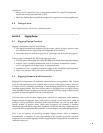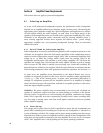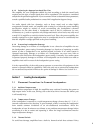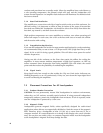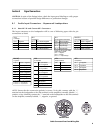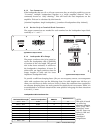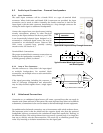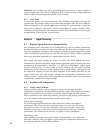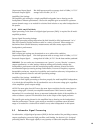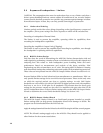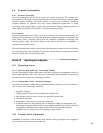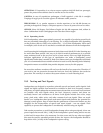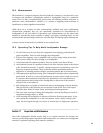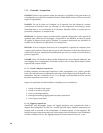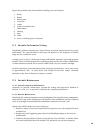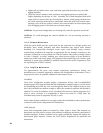
Unprocessed Input Signal: EIA-426B spectrum with an average level of 0 dBu / 0.775 V
Processed Output Signal: average level of 0 dBu / 0.775 V
Amplifier Gain Settings:
The amplifier gain setting for a single-amplified loudspeaker has no bearing on the
loudspeaker's inherent performance. Choose the amplifier gain as needed for optimum
system dynamic range or as needed for a desired level relative to any other loudspeakers in
the system.
9.2.2 Multi-amplified Mode
Signal processing in the form of a digital signal processor (DSP), is required for all multi-
amplified products.
Factory Signal Processing Settings:
The signal processing settings determined by EAW should be fully implemented "as is."
They will normally provide excellent results in a variety of venues. These settings are
determined from careful laboratory measurements and affect many aspects of the
loudspeaker's performance.
DSP Output Gains:
EAW's output gain settings are determined so as to achieve this condition.
Unprocessed Input Signal: EIA-426B spectrum with an average level of 0 dBu / 0.775 V
Processed Output Signal: average level of 0 dBu / 0.775 V for the least sensitive passband.
WARNING: Do not under any circumstances use "generic" or your "favorite" crossover,
output equalization, or other settings. Arbitrary settings will actually redesign the
loudspeaker's performance with the results being equally arbitrary. Always use EAW's
recommended signal processing settings. Performance, in terms of frequency response,
beamwidth consistency, output level capability, and wavefront coherency is dependent on
the EAW-engineered crossover and other processing settings.
Amplifier Gain Settings - IMPORTANT:
In order for EAW signal processing to function properly for multi-amplified loudspeakers,
it is critical that all amplifiers for all passbands be set to the same voltage gain, regardless
of the amplifiers' power output ratings.
NOTE: The same gain does NOT mean the same input sensitivity, but the same input to
output voltage gain. Consult your amplifier manufacturer if this cannot be readily
determined. Do not selectively boost or attenuate loudspeaker levels of the amplifiers in
order to balance a system. This should be done at the output of the signal processor.
The specific gain setting chosen for the amplifiers has no bearing on the loudspeaker's
inherent performance. Choose a gain setting as needed for optimum system dynamic
range or as needed for a desired level relative to any other loudspeakers in the system.
9.3 Subwoofer Signal Processing
For subwoofers, a digital signal processor (DSP) is the best method for providing crossover,
output equalization, protective high pass filter, and limiting. See Section 9.2.1 for signal
processing details. These apply equally to any quantity of subwoofer amplifier channels.
13



